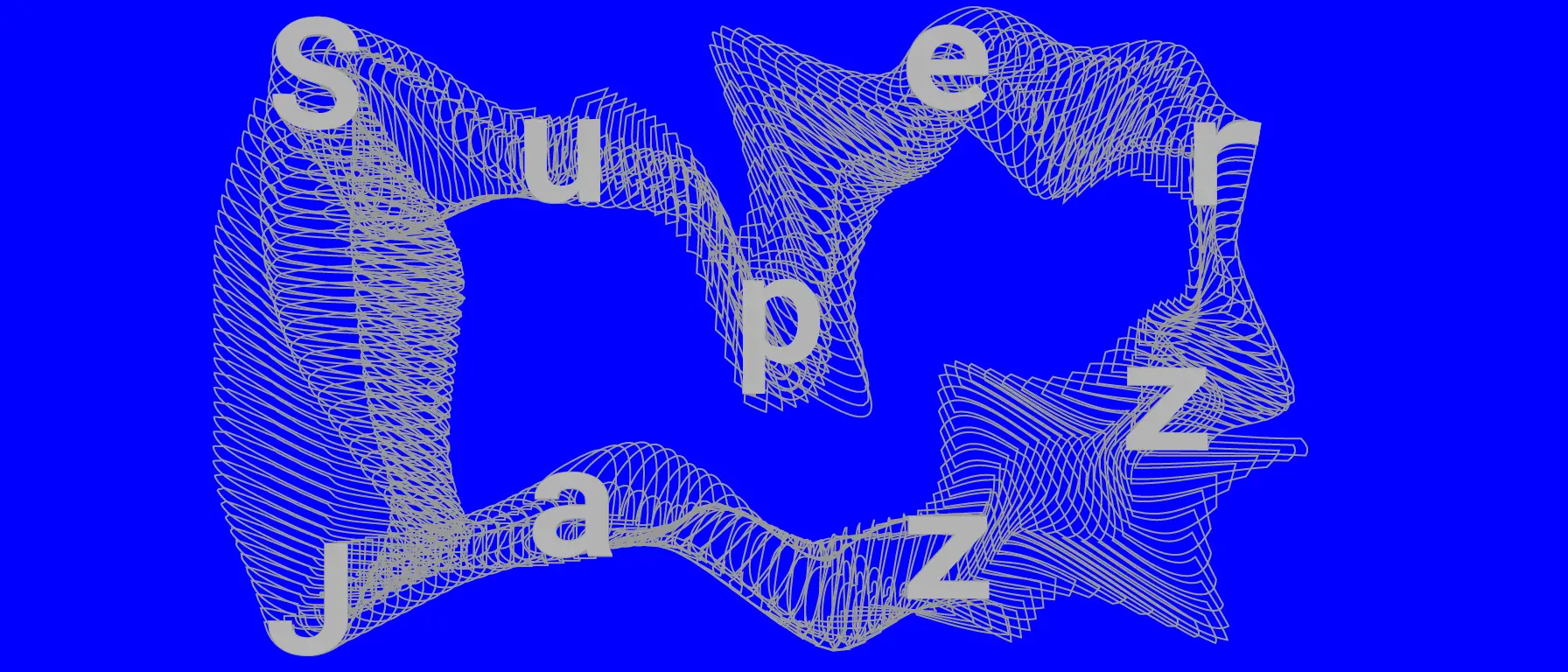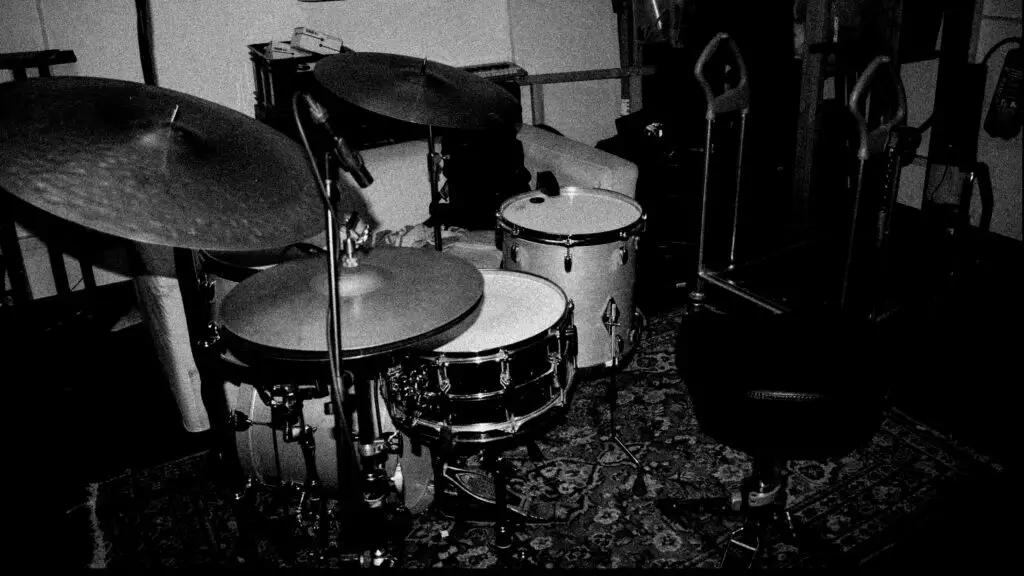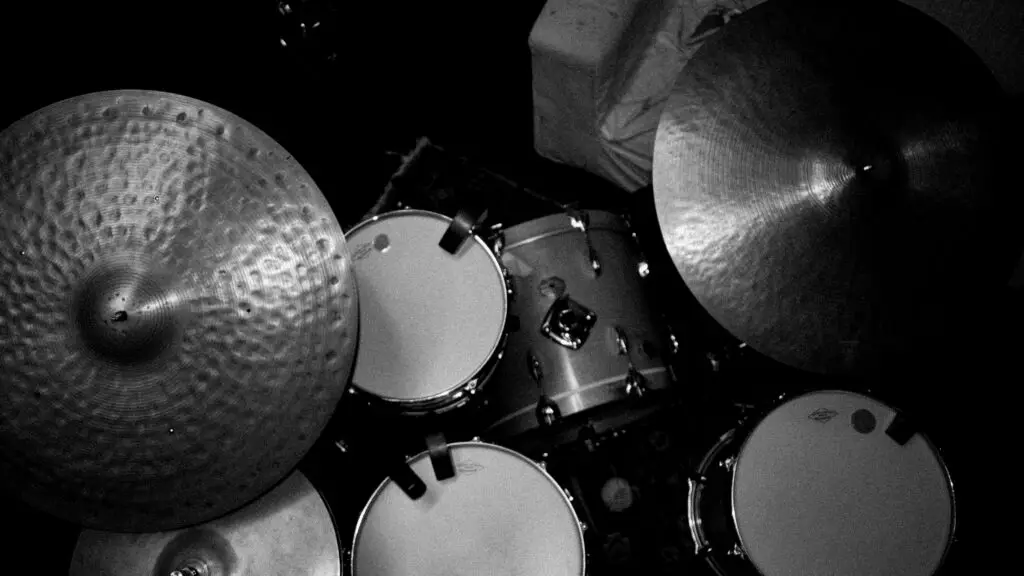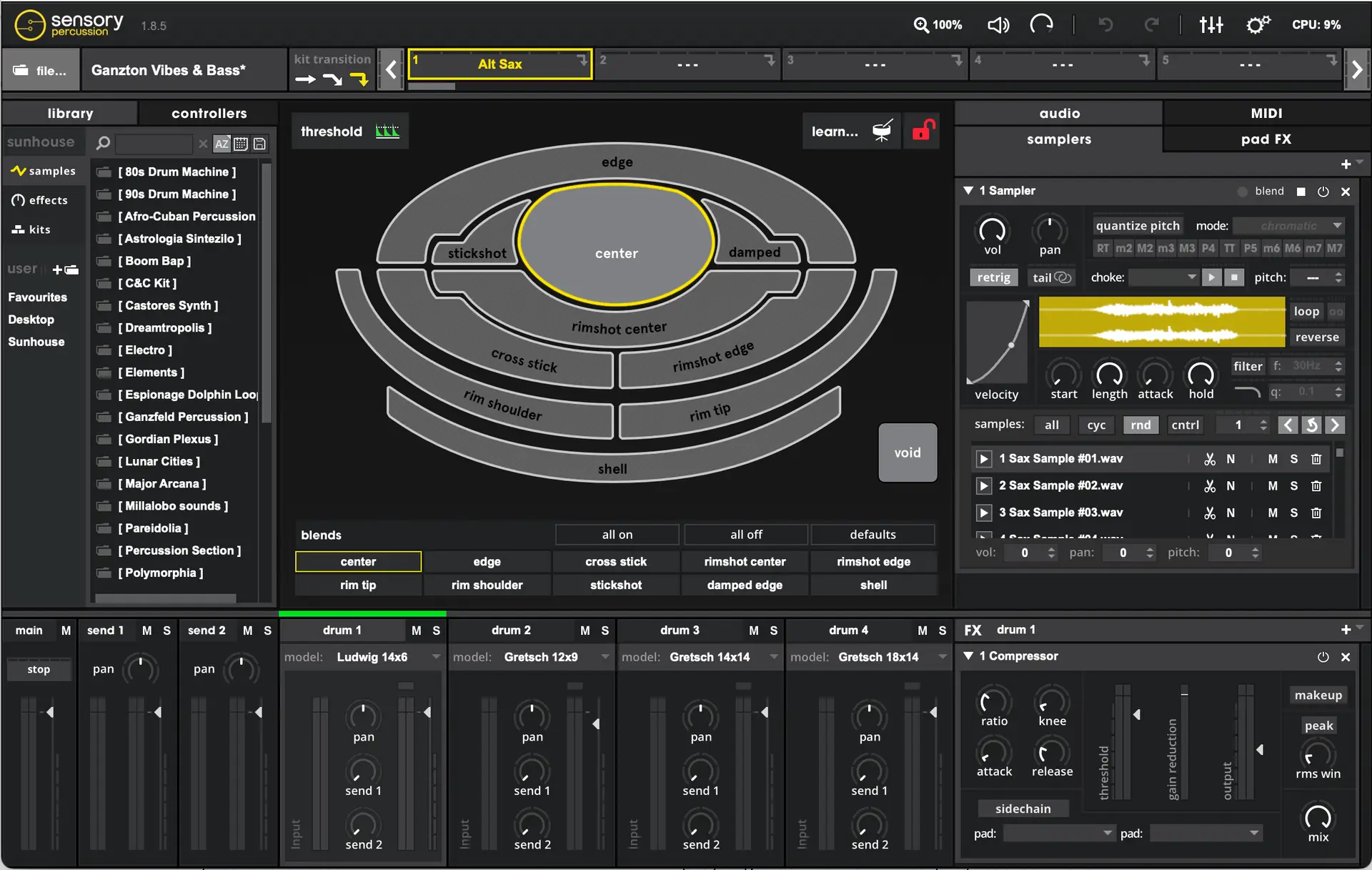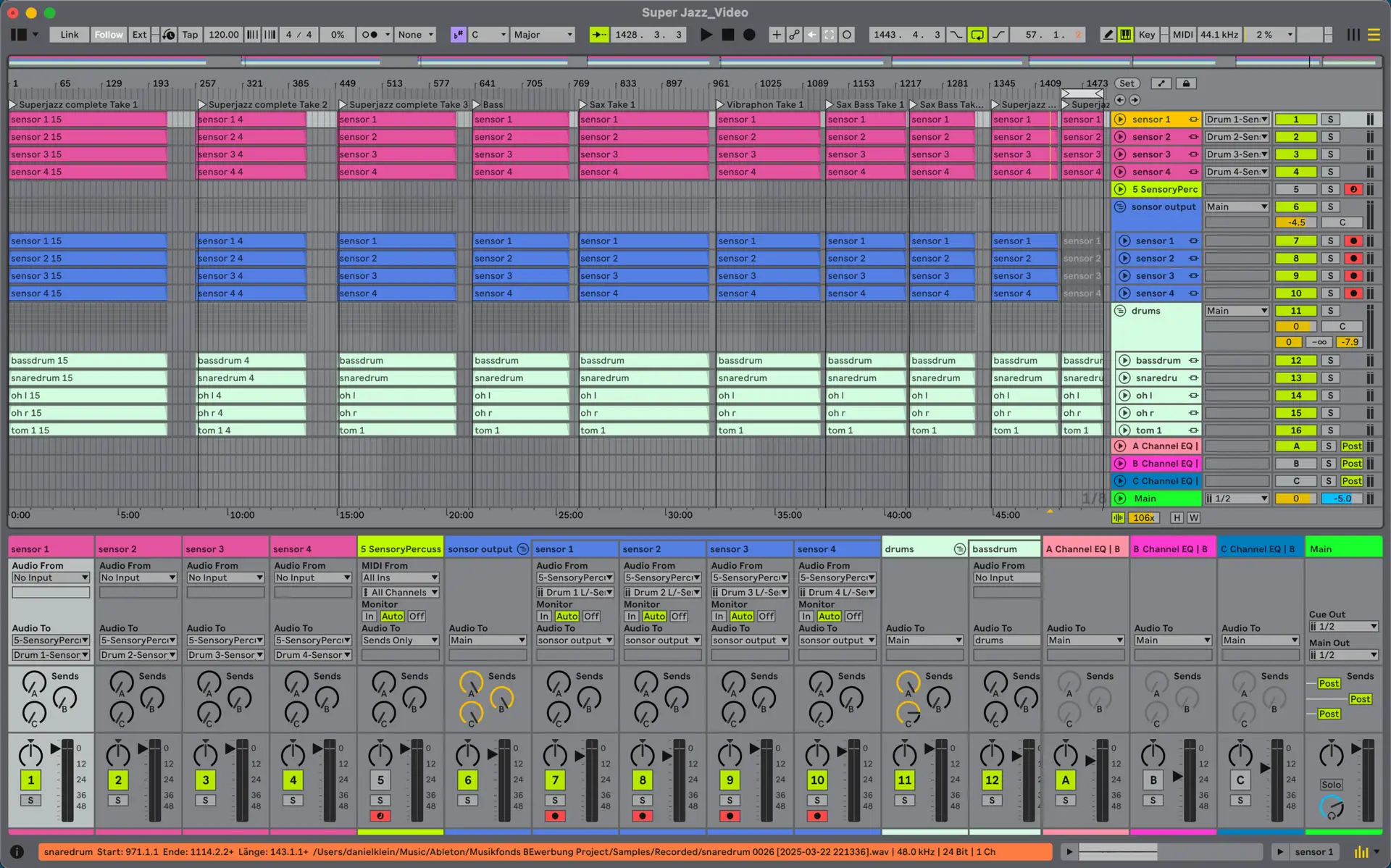About
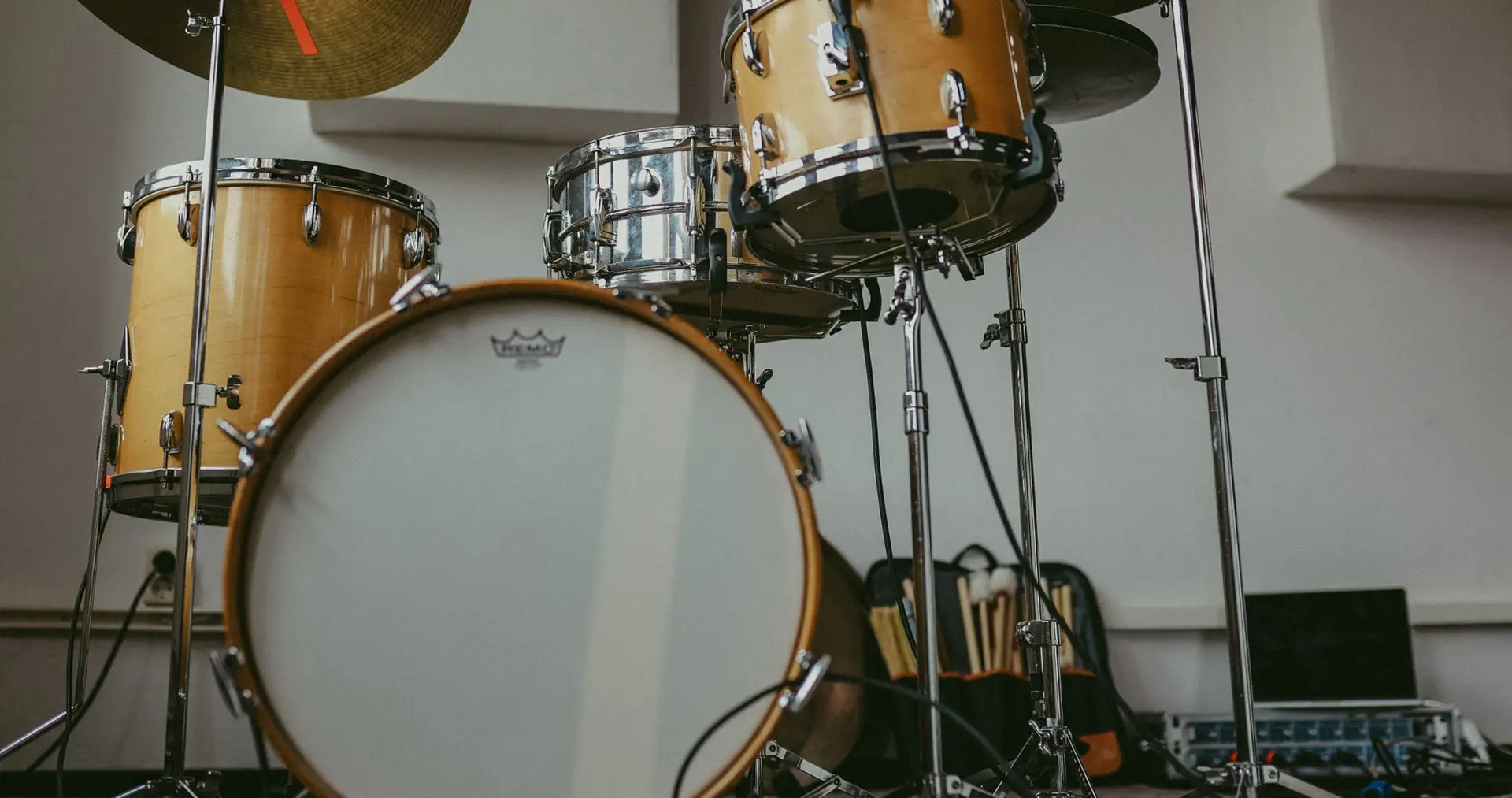
Super Jazz is a composition and performance project by Daniel Klein.
Its starting point is an extended drum set-up featuring Sensory Percussion, a sensor-based interface that translates physical gestures into sonic responses.
Each strike triggers more than a sound: it opens up sound spaces, modulates noises, shifts rhythms and melodies, and controls effects.
The drum kit becomes a command centre, enabling hands and feet to navigate entire sonic landscapes.
In doing so, Daniel Klein simultaneously assumes multiple roles: musician, composer, conductor, and instrument developer.
He shapes the sounds and the systems and sets of rules under which they emerge. The conception of these structures follows its own, technically informed logic, and for Klein, this is as much a part of the artistic work as the performance itself.
Each performance becomes an open field of experimentation – a play with prepared sonic environments, open processes, and situations that can never be entirely controlled.
The music moves between electroacoustic sounds, noise, improvised electronics, and composed patterns and structures.
The focus is not solely on creating sonic textures but on developing an instrument that generates its musical grammar, resists simple control, and demands interaction.
The question of who is playing whom, who makes decisions or responds, remains open in every performance.
deutsche Version
Die Grundidee dieses Projekts besteht darin, ein performatives System zur Echtzeit-Klangsteuerung zu entwickeln, das an der Schnittstelle von akustischem Schlagzeugspiel, digitaler Signalverarbeitung und algorithmischer Struktur operiert. Im Zentrum steht ein modifiziertes Drumset, erweitert durch Sensory Percussion – ein sensorbasiertes Interface, das physische Gesten in Klangereignisse übersetzt. Diese Konfiguration ermöglicht komplexe Wechselwirkungen zwischen körperlicher Bewegung, klanglicher Reaktion und algorithmischer Transformation.
Innerhalb dieses Systems agiert Daniel Klein zugleich als Musiker, Komponist, Dirigent und Instrumentenentwickler. Er konfiguriert nicht nur die klanglichen Ergebnisse, sondern bestimmt^ auch die technischen und strukturellen Voraussetzungen ihres Zustandekommens. Jede Performance ist als explorative Anordnung vorbereiteter Klangmodule, offener Prozesse und situativer Eingriffe konzipiert. Im Fokus steht das Verhältnis von Kontrolle und Emergenz: algorithmische Logiken treffen auf spontane Entscheidungen, und das System erzeugt unvorhersehbare Rückkopplungen und Zustände.
Kleins ästhetischer Ansatz integriert Elemente aus elektroakustischer Musik, Noise, improvisierter Elektronik und strukturierten rhythmischen Rahmen. Sein zentrales Interesse gilt weniger der Erzeugung von Klangtexturen als der Konstruktion eines Instruments, das kompositorische Logik inhärent abbildet. Die Frage nach Autorschaft unter diesen Bedingungen zieht sich als theoretischer Leitfaden durch das gesamte Projekt: Wer spielt – der Performer, das System oder ihre Konfiguration?
Kleins Praxis bewegt sich im Spannungsfeld von technologischer Entwicklung, performativer Forschung und klanglicher Gestaltung. Langfristige Perspektiven umfassen die Integration von KI-Systemen, Motion Tracking und Kollaborationen mit Akteur:innen aus Tanz, Theater und visuellen Medien.
Super Jazz recording session at Daniel’s studio in Leipzig – Germany.
Technical Aspects
The technical system of Super Jazz is based on high-resolution sensor mapping using Sunhouse Sensory Percussion, which translates the subtlest articulations into controllable parameters.
Each drum is treated as a multidimensional playing surface: the sensors detect up to ten distinct zones per drumhead, differentiating striking velocity, position, timbre, pressure, and dynamic curves. These data sets interlock, enabling complex control logics.
Sound assignments do not follow rigid trigger logic but instead use zone-specific layers, gesture-driven modulations, velocity-dependent switching, and crossfades between sound layers.
Samples, synthesis engines, and effects respond according to the playing situation. Here, control does not mean triggering fixed sounds, but rather shaping a dynamic playground where stroke, movement, timing, and timbre constantly generate new interactions.
At a systemic level, conditional routings, probability controls, and randomisers are employed. This creates a variable sonic environment in which sampling is conceived as a process-oriented recontextualisation: granular, reversible, modulated.
Round-robin logics, stack modes, and velocity layers ensure that sounds evolve organically and never repeat exactly.
Through looping and real-time processes, playing actions can be directly recorded, modified, and re-injected into the system. Additionally, MIDI, OSC, and CV interfaces allow for the integration of external devices, DAWS, or visual systems.
Super Jazz utilises these technical possibilities to design an open, responsive sound machine in which human intention, physical feedback, chance, and system reactions are in a state of constant negotiation. The system remains open, mutable, and invites continuous reinterpretation.
deutsche Version
Das technische System von Super Jazz basiert auf einem hochauflösenden Sensormapping mit Sunhouse Sensory Percussion, das feinste Artikulationen in steuerbare Parameter übersetzt. Jede Trommel wird dabei als multidimensionale Spielfläche behandelt: Die Sensoren erkennen bis zu zehn unterschiedliche Zonen pro Fell, differenzieren Anschlagsstärke (Velocity), Schlagposition, Timbre, Druck und Dynamikverlauf. Diese Daten greifen ineinander und erlauben komplexe Steuerungslogiken.
Die Klangzuweisungen folgen keiner starren Trigger-Logik, sondern nutzen zonenspezifische Layer, gestengesteuerte Modulationen, velocity-abhängige Umschaltungen und Crossfades zwischen Klangschichten. Samples, Synthese-Engines und Effekte reagieren abhängig von der Spielsituation – Kontrolle bedeutet hier nicht das Abrufen festgelegter Sounds, sondern die Gestaltung eines dynamischen Spielfeldes, in dem Schlag, Bewegung, Timing und Timbre permanent neue Interaktionen erzeugen.
Auf systemischer Ebene kommen Conditional Routings, Wahrscheinlichkeitssteuerungen und Randomizer zum Einsatz. So entsteht eine variable Klangumgebung, in der Sampling als prozessorientierte Rekontextualisierung gedacht wird: granular, reversibel, moduliert. Round-Robin-Logiken, Stack-Modi und Velocity-Layers sorgen dafür, dass sich Sounds organisch verändern und nie exakt wiederholen.
Über Looping- und Echtzeitprozesse lassen sich Spielaktionen direkt aufnehmen, modifizieren und erneut in das System einspeisen. Zusätzlich ermöglichen MIDI-, OSC- und CV-Schnittstellen die Anbindung externer Geräte, DAWs oder Visual-Systeme.
Super Jazz nutzt diese technischen Möglichkeiten, um eine offene, reagierende Klangmaschine zu gestalten, in der menschliche Intention, physikalisches Feedback, Zufall und Systemreaktion in ständiger Aushandlung bleiben. Das System bleibt offen, verschiebbar und lädt zu permanenten Umdeutungen ein.
Video Documentation
In April 2025, I recorded a series of environments that I developed with the help of my dear colleagues Tobias Fröhlich (double bass) and Simon Schorndanner (tenor saxophone). The piano samples are taken from a recording session of a John Cage piece for prepared piano, while the vibraphone samples were acquired during my residency at the conservatory of Plauen, Germany. The videos have been recorded by my dear friend Arthur Kohlhaas.
Environment 1: Vibraphone
All pitches controlled by velocity and timbre. except for bassdrum.
Snare: dry/staccato notes pitched controlled by velocity and timbre
High Tom: legato notes
Floor Tom: vibrato legato notes
Bassdrum: -12step pitched legato tones. radom pitch.
Environment 2: Saxophone
Pitches controlled by velocity and timbre. except for bassdrum.
Snare:intense short & fast phrases
High Tom: multiple long legato phrases
Floor Tom: not patched
Bassdrum: dry/staccato notes pitched controlled by velocity and timbre
Environment 3: Double Bass
Samples pitched by velocity & timbre controller on snaredrum.
Snare: no samples
High Tom: multiple long arco phrases
Floor Tom: longer melodic phrases
Bassdrum: dry/staccato single notes pitched controlled by velocity and timbre
Environment 4: Saxophone & Double Bass
No global pitch/modluation logic.
Snare: meldoic sax phrases
High Tom: no assigments
Floor Tom: longer melodic bass phrases
Bassdrum:dry/staccato single notes pitched controlled by velocity and timbre
Environment 5: Super Jazz I
Semi-Random pitch/modulation logic on snare and high tom.
Snare: piano & vibes staccato samples
High Tom: piano & vibes legato samples
Floor Tom: longer melodic bass phrases
Bassdrum:dry/staccato single notes pitched controlled by velocity and timbre
Environment 6: Super Jazz II
This setup is semi-automated by midiclips in Ableton Live, which trigger certain harmonic environments.
Snare: piano & vibes staccato samples
High Tom: piano & vibes legato samples
Floor Tom: longer melodic bass phrases
Bassdrum: dry/staccato single notes pitched, controlled by velocity and timbre –> becomes a pedal
